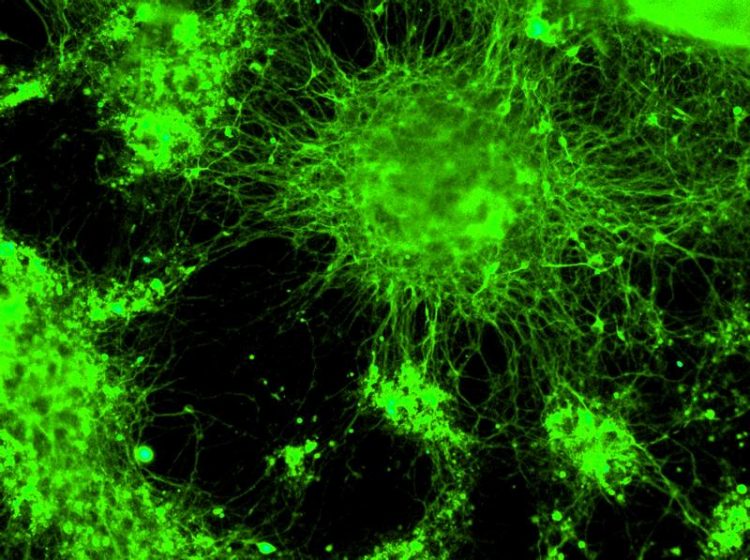Transfecting cells gently – the LZH presents a GNOME prototype at the Labvolution 2017

GNOME laser transfection can continuously achieve high vitality rates of over 80% in primary cells (here: cortical neurons). Photo: LZH
Whether for drug screening, protein production or gene regulation, moving exogenous molecules into biological cells, also known as transfection, is a key technology for basic research and also for clinical and industrial applications.
The main challenge lies in permeating the cell membrane efficiently without having a lasting effect on the cell, or the functionality of the molecule.
Laser transfection with gold nanoparticles
The LZH has developed the gold nanoparticle supported laser transfection process GNOME (gold nanoparticle mediated), which allows high transfection efficiency with a minimal influence on the target cells, high vitality rates, and short process times.
The gold nanoparticles adhere to the cell membrane and accurately focus the laser energy of a pico-second laser. The membrane is permeated and exogenous molecules can flow into the cell.
The prototype shown at the Labvolution is suitable for all common microtiter plate formats, and is thus ideal for high throughput screening. As it is used, among other things, in the development of active agents.
Also, new therapeutics, for example based on CRIPR (Clustered regularly interspaced short palindromic repeats) technology, can be evaluated. Visitors of the exhibition can see the possibilities of the GNOME laser transfection and how it is operated.
The Lower Saxony Pavilion is organized by the Lower Saxony Ministry of Science and Culture as well as the Ministry for Economics, Labor and Transport.
Media Contact
More Information:
http://www.lzh.de/All latest news from the category: Life Sciences and Chemistry
Articles and reports from the Life Sciences and chemistry area deal with applied and basic research into modern biology, chemistry and human medicine.
Valuable information can be found on a range of life sciences fields including bacteriology, biochemistry, bionics, bioinformatics, biophysics, biotechnology, genetics, geobotany, human biology, marine biology, microbiology, molecular biology, cellular biology, zoology, bioinorganic chemistry, microchemistry and environmental chemistry.
Newest articles

A universal framework for spatial biology
SpatialData is a freely accessible tool to unify and integrate data from different omics technologies accounting for spatial information, which can provide holistic insights into health and disease. Biological processes…

How complex biological processes arise
A $20 million grant from the U.S. National Science Foundation (NSF) will support the establishment and operation of the National Synthesis Center for Emergence in the Molecular and Cellular Sciences (NCEMS) at…

Airborne single-photon lidar system achieves high-resolution 3D imaging
Compact, low-power system opens doors for photon-efficient drone and satellite-based environmental monitoring and mapping. Researchers have developed a compact and lightweight single-photon airborne lidar system that can acquire high-resolution 3D…





















